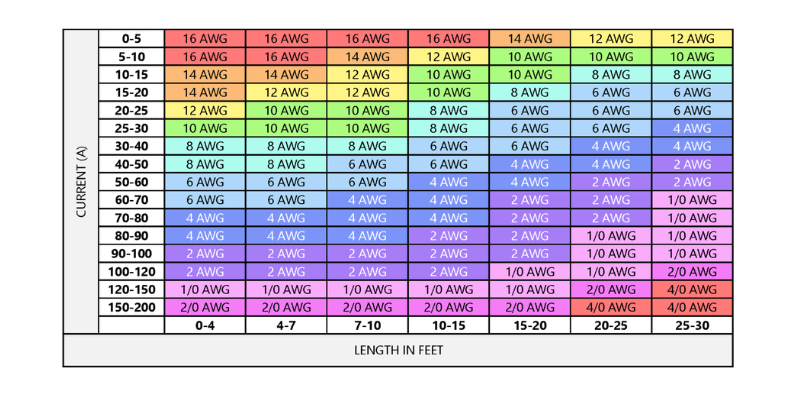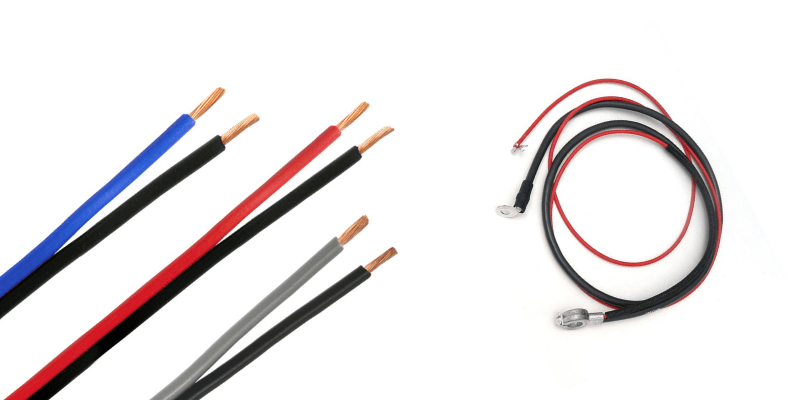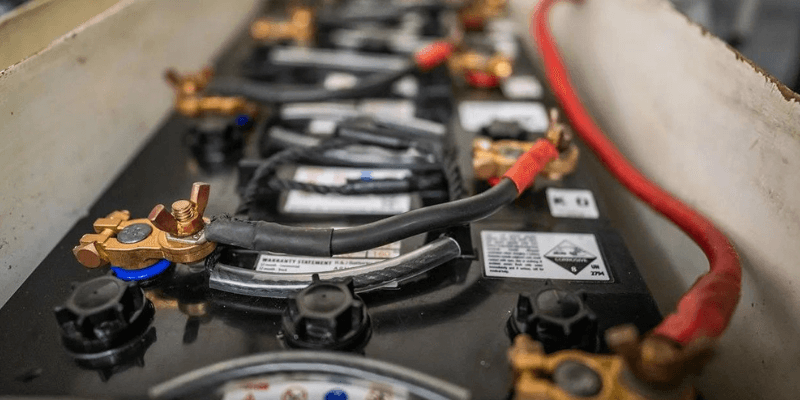Ukukhetha ubungakanani be-cable yebhetri efanelekileyo kubalulekile kwiinkqubo zombane kunye neenkqubo zombane. Kwezi sikhokelo, siya kuphonononga izinto eziphambili ekuthandeni ubungakanani be-cable kwaye inikezela ngengqondo yengcali yokukunceda ukuba ubone ubungakanani obugqibeleleyo kwiimfuno zakho.
Yintoni i-wirege gauge?
I-Wire Gauge ibhekisa kwi-wire ubukhulu, ngamaxabiso amancinci abonisa iingcingo ezinamanzi kunye nenyanga enkulu ebonisa abacociweyo.
Ubungqingqwa bocingo becingo luchaphazela iipropathi zalo zombane, njengokuxhathisa kunye nomthwalo. Ukwazi igeji kunceda uhlolisiso lokuvavanywa kwezicelo kunye nokwenza ukuba unxibelelwano phakathi kwabavelisi kunye nabathengi.

Ukuqwalaselwa kwe-wire gaugs
Ukukhetha i-gesi ye-wire ye-wire yendlela yombane kubalulekile.
I-gauge efanelekileyo ixhomekeke kwi-Aperagerage yesekethe yeSekethe; I-Amprerage ephezulu ifuna iingcingo eziphezulu zokuthintela ukugqithisa.
Kwenzeka ntoni ukuba ubungakanani be-cable yebhabheli buncinci kakhulu?
Iingcingo zengcingo ezikhulu zinokungaxhathisi obuphantsi, ezichaphazela imiba emibini ephambili njengoko ihamba phakathi kwabo:
- I-voltage yehlile: ihlaso le-voltage lenzekile, elithetha i-voltage kwisiphelo se-wire iphantsi kunebhetri. I-voltage egqithisileyo inokuthintela i-elektroniki ekusebenzeni. Kubalwa kusetyenziswa umthetho ka-OHM (v = ir), apho i-voltage yehla, ndim okwangoku, kwaye r kukuchasana. Ukonyusa okwangoku okanye ukuxhathisa kuya kwandisa i-voltaged yehla. Ukuxhathisa kuxhomekeke kububanzi be-wire (igeji) kunye nobude; Iintambo zebhetri ezingaphantsi zinokukhokelela kwi-voltage egqithisileyo yehla.
- Ukuzukulwa komtshilo: Ukuhamba ngokuhamba kwecingo kuvelisa ubushushu; Ukuchasana okungakumbi kubaphumela kubushushu obungakumbi. Iingcingo ezingaphantsi zinokuphelisa ukuya kwinqanaba lokunyibilika i-cheng yazo, ibeka umngcipheko womlilo. Le ngxaki ye-OcferEights inkxalabo malunga ne-voltage ihla xa khetha ibhetri.

Kwenzeka ntoni ukuba ubungakanani bebhabheli buyinto enkulu kakhulu?
Ukukhetha intambo yebheji engaphezulu kwebhetri eneengxaki ezintathu eziphambili: iindleko, ubunzima, kunye nokusetyenziswa ngokulula.
- Iindleko eziphezulu: Iidrike ze-ciod cio zibiza kakhulu. Ngelixa i-rights imfutshane ivule iindleko eziMpuma, intambo ende yenziwa ixabisa into ebalulekileyo.
- Yongeza ubunzima kunye nobunzima: Ukunyusa i-wire igeji kukuphakamisa ubunzima. Oku kunokuba kungathandeki ukubaleka okufutshane kodwa kunokubangela i-cusbersome xa ushukumisa iintambo ezinkulu.
Ngelixa ukukhetha iintambo ezinkulu kukhuselekile kunokukhetha ukukhetha okuncinci, kakhulu iintambo zinokukhokelela kwiindleko ezingeyomfuneko, ubunzima kunye nokudandatheka. Kubalulekile ukuba ube nomlinganiso ngaphandle kokungaphezulu.

Ungazi njani ukuba zingaphi iinkqubo zenkqubo?
Ukubala iimfuno zakho zangoku zilula.
Uninzi lwezinto zombane zidwelise imilinganiselo yawo yangoku kunye namandla. Kwizixhobo eziqhuba kwi-12 volts, zongeza iirandi zazo zangoku zokuzoba.
Kwizixhobo zeVolt, sebenzisa i-inverter ukuguqula i-DC kwibhetri kumandla e-AC. Ubungakanani be-Inverter, faka iimfuno zexabiso lemihlaba (kwii-watts) zazo zonke izixhobo zombane. Umzekelo, ukuba bafuna i-2,500 ye-watts edibeneyo, i-3,000-watt intsholongwane iyacetyiswa.
Ukubala umzobo okhoyo, yahlulahlula i-Inverter ye-Inverter ye-Intter ye-Watt ye-Infting Posttage yebhetri. Umzekelo, ama-3,000 ii-watts (i-inverter ye-inverter) yahlulwe yi-12 volts (i-voltage yebhetri) iphumela kwi-Amps ephezulu ye-250.

Ngaba ubungakanani be-gauge dioge ilungele iintambo zebhetri?
Ukukhetha i-wire ye-wire efanelekileyo kwiintambo zakho zebhetri kuxhomekeke kwi-OKUMNIKI.
Emva kokubala imfuneko yakho yangoku, chaza ubude bekhebula. Ubude obufutshane bunciphisa ubunzima kunye neendleko.
Nje ukuba ube nemilinganiselo yomibini, nxibelelana ne-wire wirating shaying ukukhetha ubungakanani be-cable efanelekileyo.

Ukukhetha ubungakanani be-cable yebhetri
Ukukhetha ubungakanani bekhebula ngebhetri engalunganga kunokukhokelela kwiindleko ezongezelelweyo, ukukhathazeka, kunye neengozi zomlilo. Nangona kunjalo, ukukhetha ubungakanani belungelo ngokuthe ngqo. Sebenzisa iingcebiso ezinikezelweyo okanye unxibelelane nengcali yebhetri yeHolo ukuqinisekisa ukuphuculwa kwebhetri yakho kuyaphumelela!

